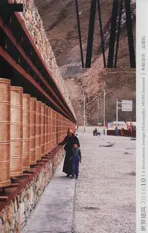玉树地震遗址纪念馆,青海,中国
2016-11-14孟建民
玉树地震遗址纪念馆,青海,中国
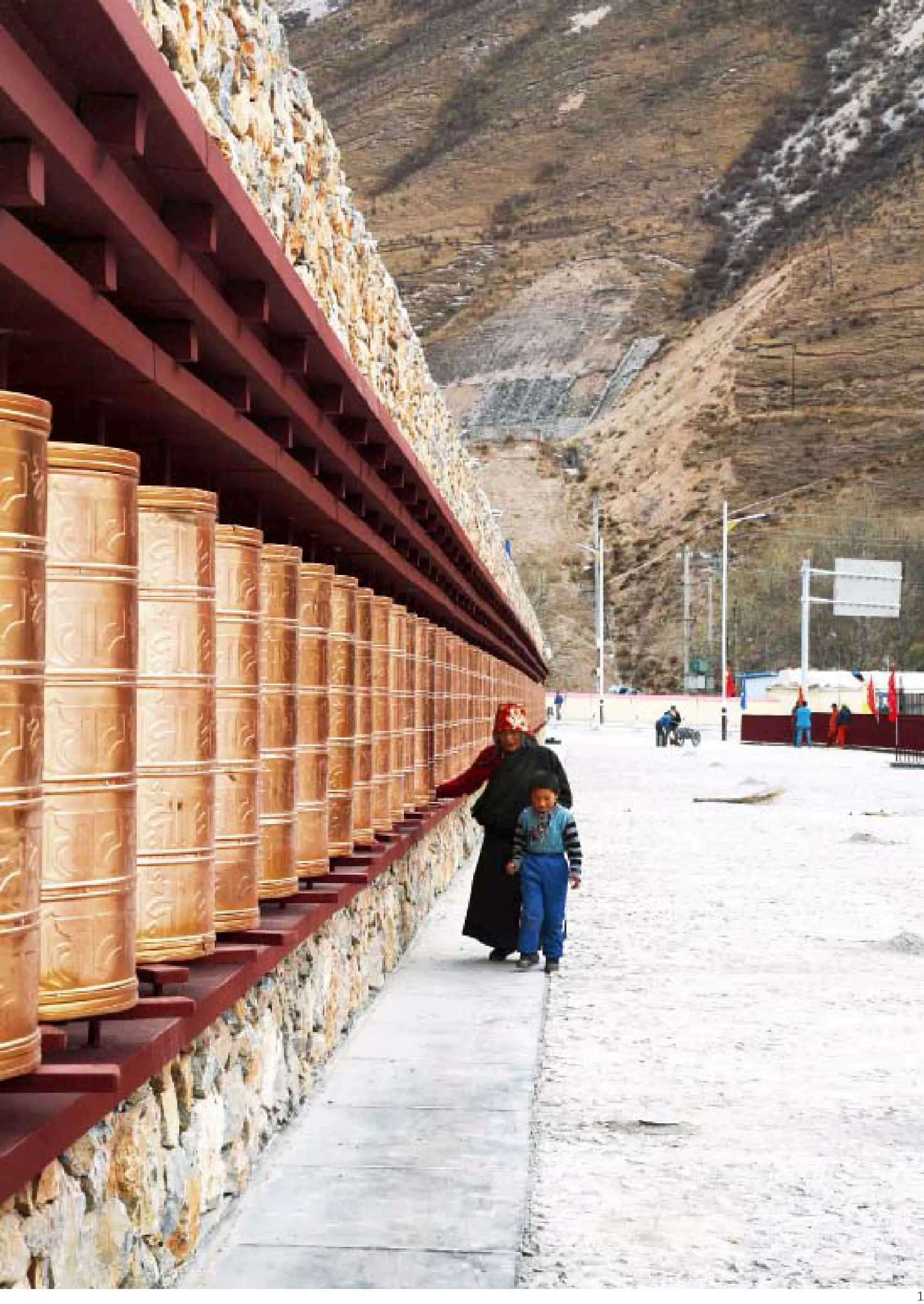
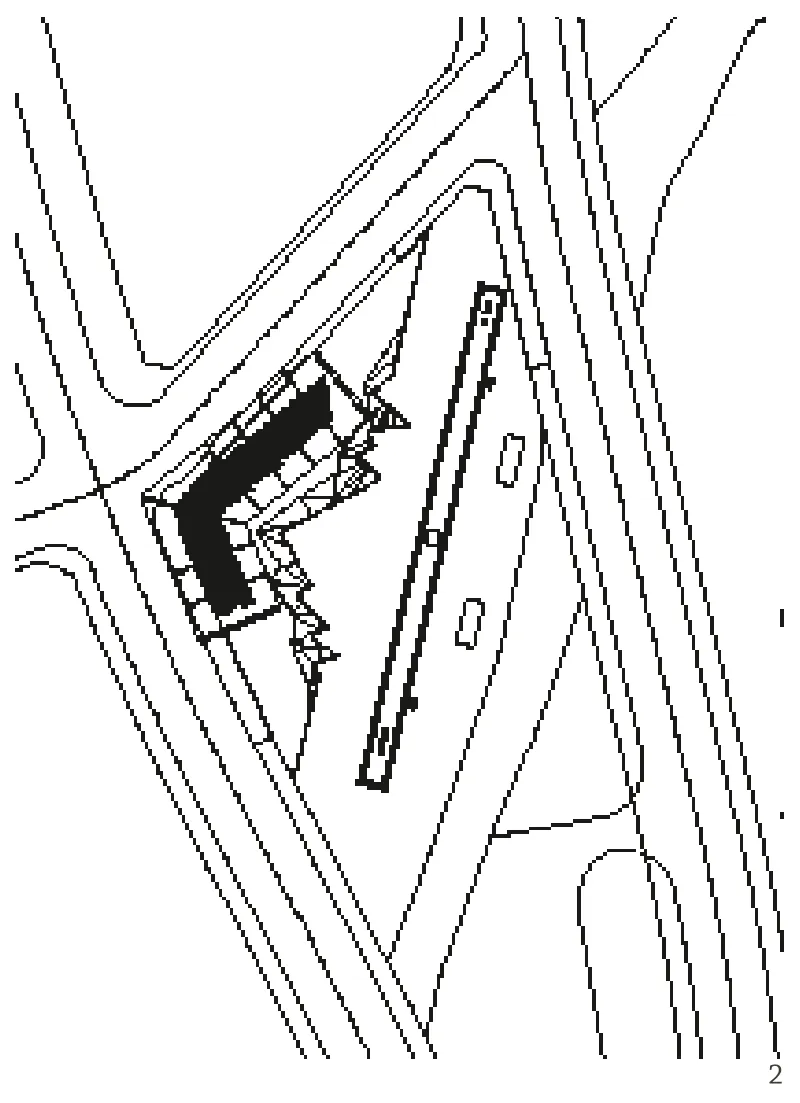
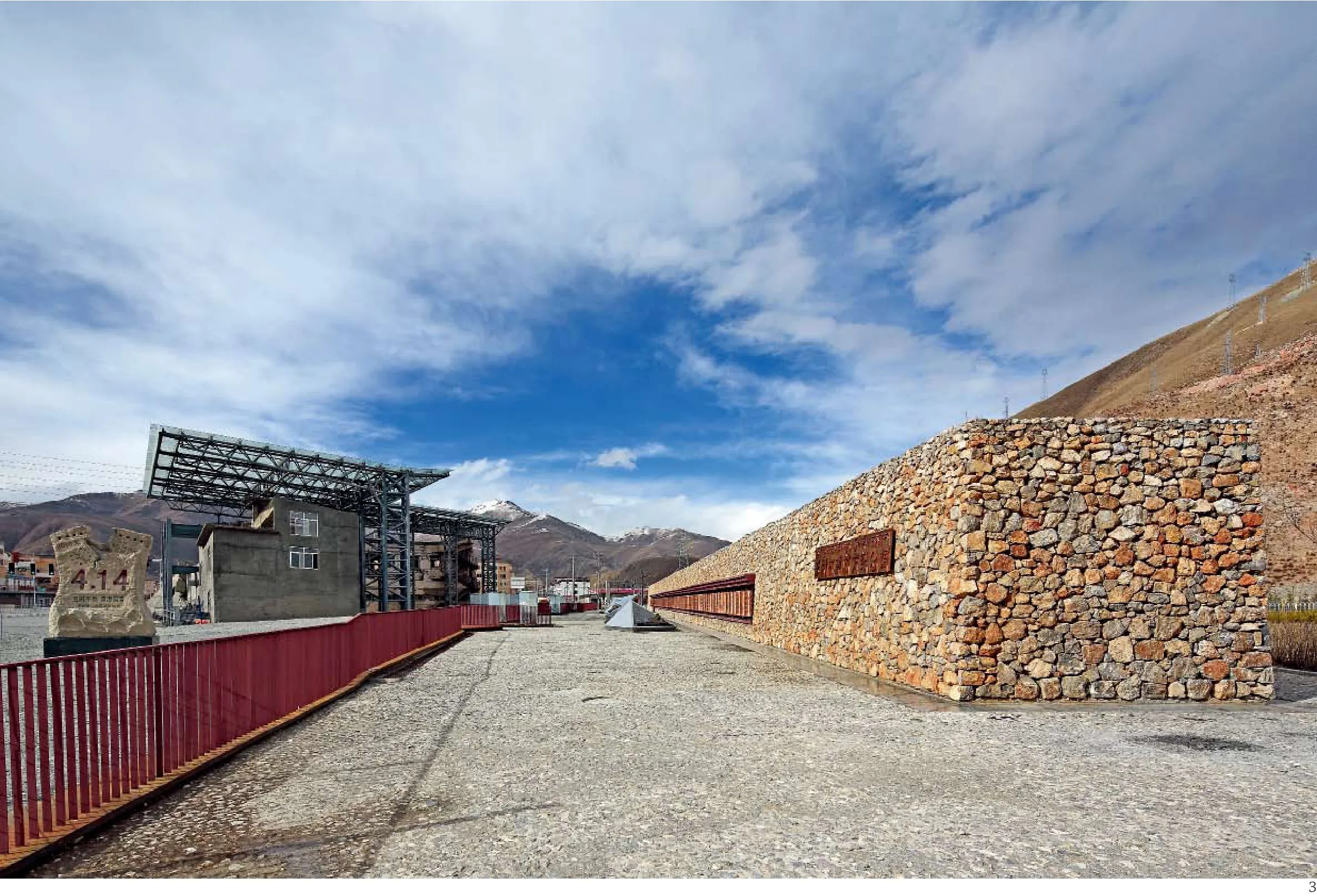
1 外景/Exterior view
2 总平面/Site plan
3 外景/Exterior view
2010年4月14日上午7时49分,青海省玉树藏族自治州玉树县发生7.1级地震,遇难人数达2800多人。中国建筑学会随后代表建设部为玉树重建组织了一次建筑师的集群设计,我也有幸参加并创作了玉树地震遗址纪念馆。
玉树地震遗址纪念馆的规模并不大,总建筑面积为3000m2。在面对这个被预设为记录灾难事件、体现藏地生死观的命题式设计任务时,建筑师所面临的最大困境在于如何深刻理解藏地信仰所带来的文化差异——对于身处藏地的玉树人来说,信仰作为一种强大的精神力量,已经深刻地融入“仪式化”的生活方式中;当这种“仪式化”成为一种生活常态,必然深刻影响到他们的生命哲学以及对于空间的理解。我们试图以平视的视角来审视这种差异,并重新思考地震遗址纪念馆表达的文化意义:它不仅是灾难事件的记忆载体,同时更应该成为当地藏民日常化的生活场所。
基地位于结古镇的南入口格萨尔王宾馆遗址旁边,成为进出玉树的必经之路。方案以保留的格萨尔王宾馆遗址为展示主体,纪念馆主体隐于地下。新旧建筑“一隐一显”,通过控制地面体量,尽可能突出遗址本身的视觉震撼力和纪念意义。地面通过两条线性元素进行限定,两者之间围合的广场是举行仪式集会的纪念场所。贯穿场地的折线形“裂痕”作为采光缝限定出遗址保护范围,同时建立起遗址与地下展厅的视觉联系。极简的直线形纪念长墙以暖色毛石制成,直指结古寺。长墙不仅隐含着内在精神寓意,同时作为遗址的背景与远方群山相融。沿着墙体设计的85个转经筒,成为人们进出玉树时的标志性构筑物,在纪念馆转经祈福也成为当地藏民宗教生活的重要组成部分。
建筑主体藏于地下,以纯粹的“方”和“圆”为基本原型。方案采取地域建筑设计策略,通过“材料、色彩、光”3种基本建筑要素的运用,表达藏地建筑特色。内部空间采用暖色毛石、素混凝土、藏红色耐候钢板等现代材料营造内敛而庄重的空间氛围。当人们通过线性空间序列缓缓进入中央的祈福之庭,内聚的圆形空间和环绕的壁龛矩阵试图唤起观者内心的精神共鸣,把沉重的灾难记忆转化为对生命的祈福,传达出人与自然和谐共生的生命哲学。□(孟建民 文)
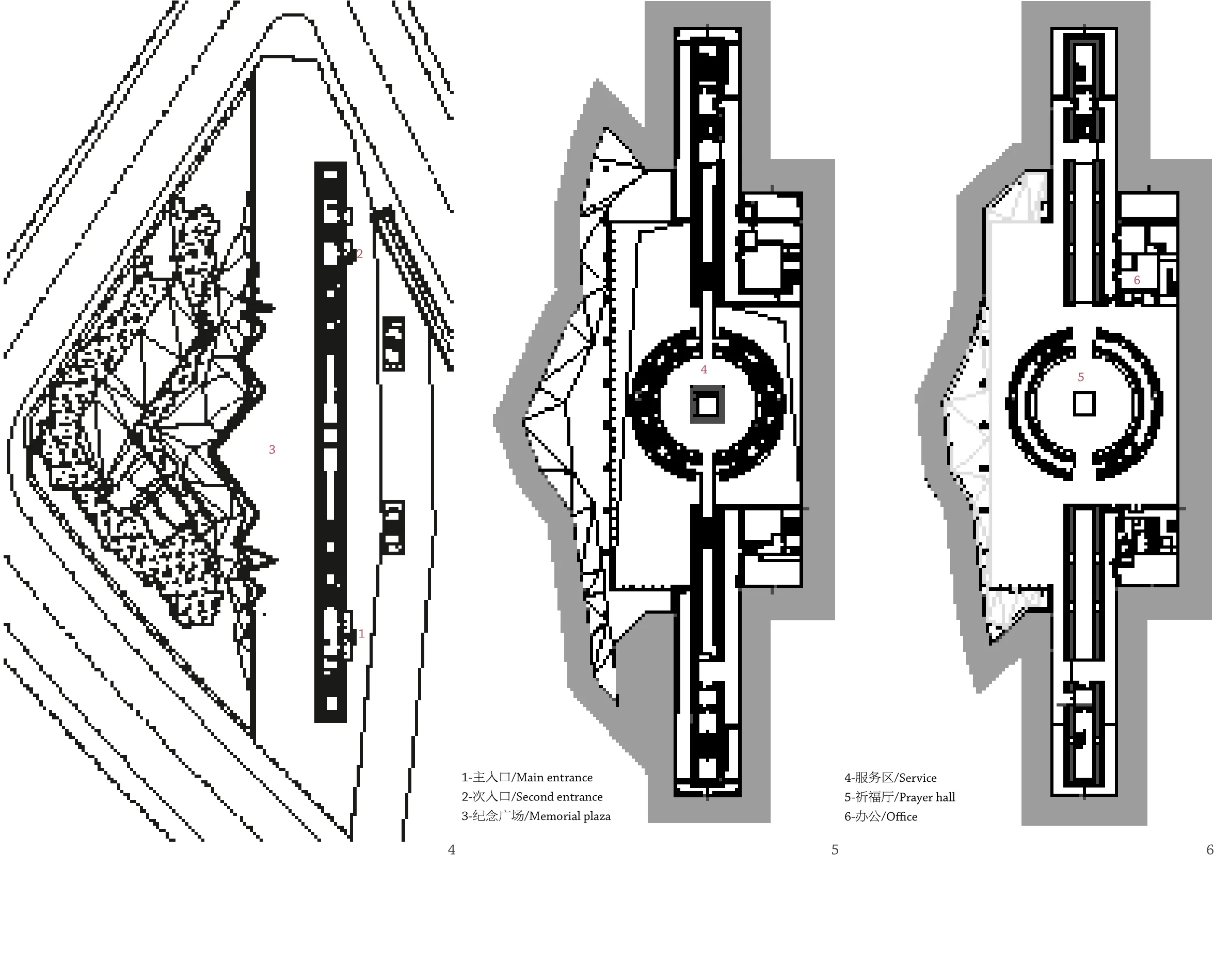
4 地上一层平面/Floor 1 plan
5 地下一层平面/Floor B1 plan
6 地下二层平面/Floor B2 plan
项目信息/Credits and Data
设计团队/Design Team: 徐昀超,邢立华,招国健,施水清等/XU Yunchao, XING Lihua, ZHAO Guojian, SHI Shuiqing, et al.
用地面积/Site Area: 6303m2
设计时间/Design Time: 2010
摄影/Photos: 招国健,张广源/ZHAO Guojian, ZHANG Guangyuan
At 7:49 in the morning of April 14, 2010, an earthquake of 7.1 magnitude occurred in Yushu Tibetan Autonomous Prefecture, Qinghai province,with the number of victims totaling more than 2800. Te Architectural Society of China, representing the Ministry of Housing and Urban-Rural Development,organized a group of architects to reconstruct the Yushu area. I was also honored to be engaged in the design of Yushu Memorial of Earthquake Ruins.
Yushu Memorial of Earthquake Ruins is not particularly large, with a total floor area of about 3000m2. While given the propositional design task that is preset to record the disaster and reflect the view of life in the Tibetan region, the biggest difficulty that architects were facing was how to comprehensively understand the cultural diferences brought up by the religious beliefs in the Tibetan region. For Yushu people living in the Tibetan region, religious belief, as a strong spiritual power,has deeply melted into their ritualized lifestyle. When the ritualization becomes a normal living state, it inevitably poses impact on their philosophy of life and understanding of space. Architects tried to look at the differences from a horizontal point of view and rethink the cultural meanings that the memorial of earthquake ruins should communicate: the memorial of earthquake ruins should not only be a carrier of memories of the disaster, but also an everyday place for local Tibetans.
The memorial is located beside the KingGesar Palace Relics at the southern entrance of the town of Jiegu, and is the gateway to Yushu. The project takes the preserved King Gesar Palace Relics as the main body of exhibition, and the main body of the memorial is hidden below the ground. Old and new structures are above and under the ground respectively, thus the volume above the ground is controlled in order to emphasize the visual impact and commemorative meaning of the relics itself to the maximum. The ground is defined by two linear elements,and the square enclosed by the elements is the commemorative place for holding ceremonies and gatherings. The fold line shaped "cracks" that run through the square define the protection area of the relics as lighting cracks, on the other hand,they establish the visual connection between the relics and the underground exhibition halls. The minimal linear long commemorative wall is made of bluish ashlars and directly points to the Jiegu Temple. The wall not only implies inherent spiritual meanings but also becomes the background of the relics, and the 85 prayer wheels installed along the wall also become an important part of the gateway to Yushu and path of prayers.
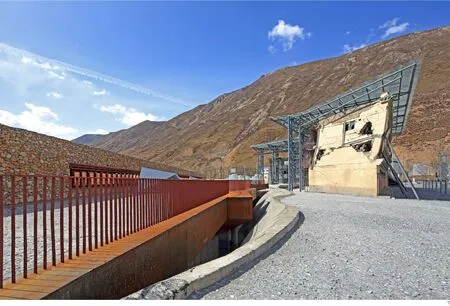
7 外景/Exterior view
Te main body of the building is hidden below the ground, and pure "square" and "rotundity" are taken as the basic prototype. Te project adopts the strategy of regional architectural design, showcasing the unique characteristics of Tibetan architecture with the application of three basic architectural elements - materials, colours and lights. The interior space creates a modest and solemn spatial atmosphere by applying modern materials such as bluish ashlars, plain concrete and safron weatherproof and antirust steel plates. When people gradually walk into the central blessing hall via the linear spatial sequence, the cohesive round space and surrounding niche matrix attempt to arouse the spiritual resonance deep inside the visitors' hearts,transform the heavy memories of the disaster to the blessing for lives, and convey a philosophy of life that promotes the harmonious coexistence between human beings and the nature.□(Text by MENG Jianmin)
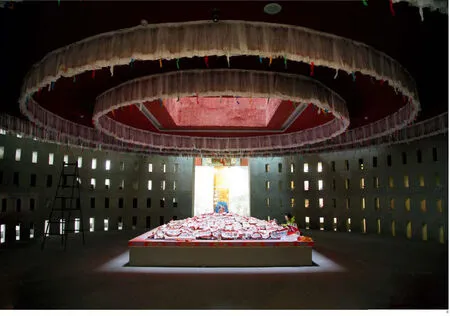

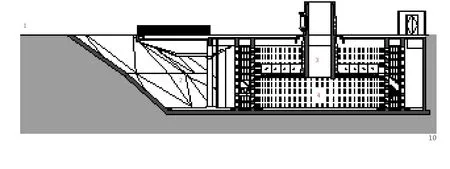
8 内景/Interior view
9.10 剖面/Sections
评论
庄惟敏:每个建筑都承载着功能并扮演着对环境的角色。很多建筑师都坚信他们有权用建筑空间实现个人的追求和表达。然而,这会让空间丧失意义、功能和公平。而博物馆—纪念馆一类的文化建筑,又往往能刺激起建筑师更多的创作激情,倾向于以一种强力的造型和视觉冲击力去表现个性的追求,而忽视了建筑的本原和对文化及其场所的尊重。然而,有一批建筑师他们能够抛开“自我”,以清晰的自省的态度去寻找自身在项目中的定位,坚守自己最基本的创作信条,尊重历史文脉,和谐环境场所,体现人文关怀,以建筑的作品表达着对社会和民众的责任。孟建民就是这样一位建筑师。
这是一个在青海玉树海拔近4000m的雪域高原的项目。建筑师面对这样一个被预设为纪录灾难事件、体现藏地生死观的命题式设计任务时,其最大挑战就是深刻理解藏地信仰所带来的文化差异,以及如何理解在“仪式化”生活方式影响下的当地民众的生命哲学,进而进行与之相适应的空间表达。这的确是一个挑战,不仅是对建筑师体力的挑战,更是精神的挑战。
项目位于通向结古镇主路的南入口格萨尔王宾馆遗址旁边,是进出玉树的必经之路。建筑师以格萨尔王宾馆的震后遗址为展示主体,将新建纪念馆主体建于地下。地面建筑体量控制得极为节制和纯粹,简洁到极致的外部体形,将人工环境对自然的关系进行了诠释,体现设计师对环境与自然的深刻理解。地面通过不规则大地裂缝的线性元素组织外部空间,形成仪式感的纪念场所。巧妙地运用 “裂痕”造型元素作为地下空间的采光,建立起遗址与地下展厅的视觉联系。
建筑师的设计在平实内敛中又展现出娴熟有力的空间控制力,以当地毛石砌筑的极简的线型纪念长墙直指结古寺,表达着内在精神的向往与对藏地信仰和文化的理解。这种将新建筑作为背景,又通过沿墙体设置的85个转经筒所形成的空间引导,给人们带来了深刻的精神与场所文化的体验。地下纪念空间以最纯粹的空间形体,营造空间序列,通过中央祈福之庭,内聚的圆形空间和环绕的壁龛矩阵,唤起观者内心的精神共鸣,通过“材料、色彩、光”的运用,把沉重的灾难记忆转化为对生命的祈福,表达了建筑师对人与自然和谐共生的哲学命题的理解与释义。
孟建民的设计使我们看到他将地震遗址纪念馆表达成不仅是灾难事件的记忆载体,更成为当地藏民日常化的生活场所。这也正体现了他是一位有情怀的建筑师,关注弱势群体,注重社会环境。他的设计中体现出人文关怀,使得这个作品与他其他的作品相比更具人文的光芒。
1-纪念广场/Memorial plaza
2-下沉庭院/Subsided court
3-采光井/Light well
4-祈福厅/Prayer hall
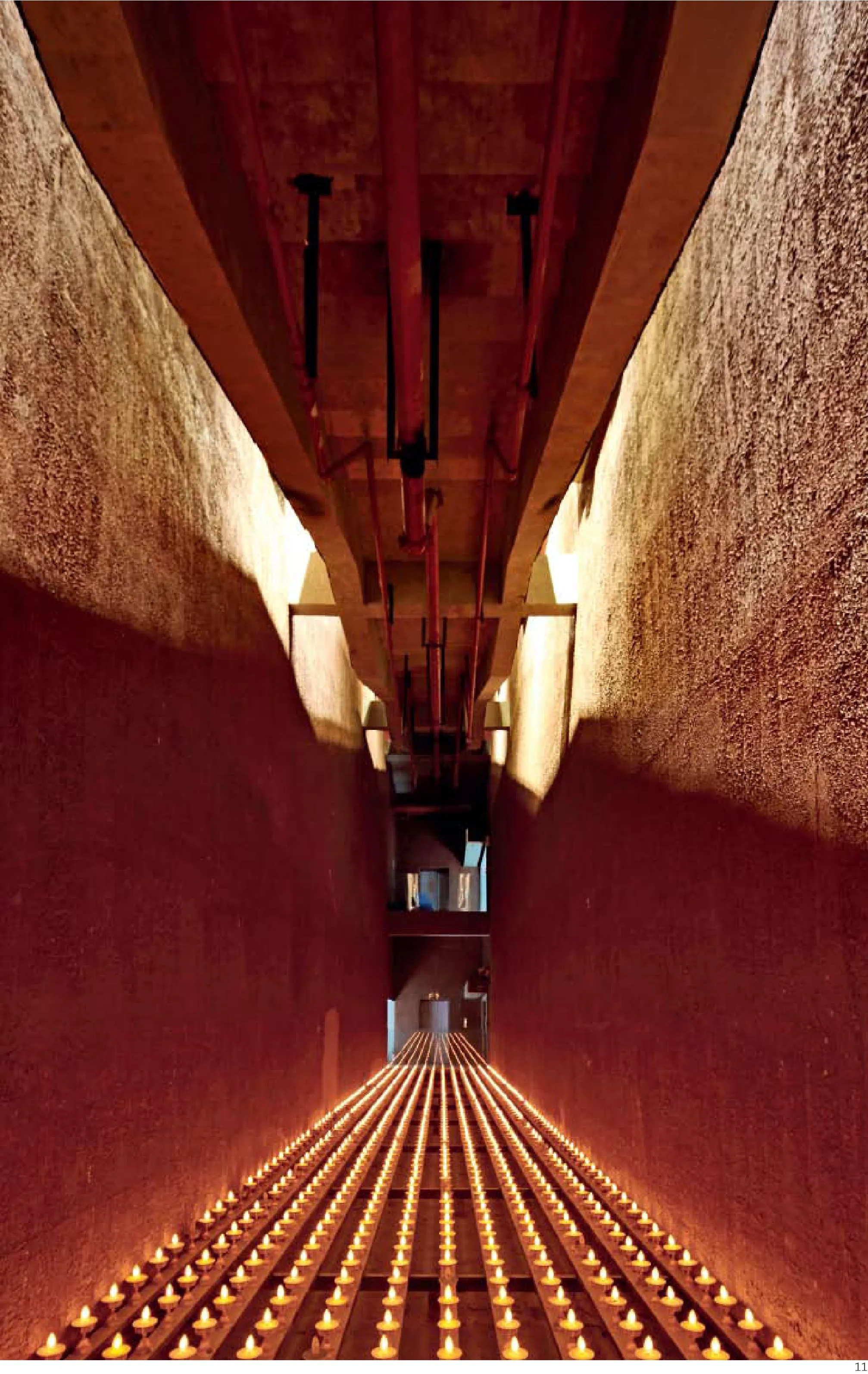
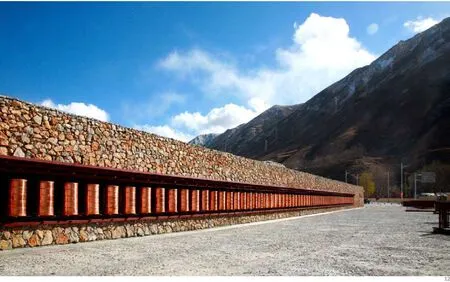
11 内景/Interior view
12 外景/Exterior view
Comments
ZHUANG Weimin: Each building has a certain functionality and role in its environment. Many architects strongly believe that they have the right to use building spaces to fulfll their personal dreams and expressions. However, this causes a space to lose its meaning, functionality, and neutrality. Cultural buildings, such as museums and memorials, have the potential to induce feelings of creativity and passion in other architects, yet the designs of these buildings have a tendency toward a forceful type of construction that utilizes visual impact to express individuality while neglecting the building's origins and respect toward its culture and place. Nonetheless, there are a small number of architects who are able to rid themselves of subjectivity to search for their role in a project with clarity and humility while adhering to their most basic tenets of creation. Tese architects respect the historical context of a place to harmonize with its environment while showing concern for human culture, so they may express their responsibility to society and its people through architectural works. MENG Jianmin is one such architect.
Tis project is situated 4,000m above sea level in the snowy highlands of Yushu in Qinghai Province. When the architect was confronted by a design task involving a disaster that reflected on the Tibetan concept of life and death, the greatest challenge was in obtaining a deep understanding of the cultural differences brought about by Tibetan beliefs and understanding how a ritualistic lifestyle affected the life philosophies of the local inhabitants so as to create an appropriate space. Tis was a challenge that strained the architect's physical and mental limits.
The project stands beside the King Gesar Palace Relics located at the southern entrance of the main road leading to Jiegu town, the solitary road to Yushu. Te architect used the ruins from the earthquake-destroyed King Gesar Palace as the primary exhibit subject and built the main body of the new memorial underground. Te structures on the surface were fnely controlled and built in simplicity to form an outer shape of exquisite concision; this interpretation of the relationship between artificial and natural environments was a manifestation of the architect's deep understanding of nature and the environment. The surface spaces were organized by irregular cracks in the ground, thus forming a memorial with a ritualistic theme. Te cracklike styling elements were cleverly used as a means to draw light underground to build a visual relationship between the ruins and underground exhibition hall.
The architect exhibited skillful and powerful control of space through his plain and restrained designs; the use of a simple and linear long commemorative wall built from local rubble masonry that points directly at the Jiegu monastery was an expression of spiritual direction and understanding of Tibetan beliefs and culture. Visitors to the memorial are provided a deeply spiritual and cultural experience with this new building as a backdrop and the spatial guidance provided by the 85 prayer wheels installed along the wall. The underground memorial uses the purest form of space to create a spatial sequence that evokes spiritual resonance in the hearts of its viewers through a cohesive circular area and arrays of alcoves in the central court of blessing, thus transforming solemn memories of the disaster into prayers of life through the use of materials, color, and light. This expresses the architect's understanding and belief in the philosophical subject of humankind's harmonious coexistence with nature.
The earthquake memorial designed by MENG Jianmin serves not only as a commemoration of the disaster but also as a local place for Tibetans. Tis shows that he is a compassionate architect who cares about the weak and has a strong regard for the social environment. His designs in this work are an embodiment of care for human culture, which paints this in an even greater humanistic light than his other works.
Yushu Memorial of Earthquake Ruins, Qinghai, China, 2013
